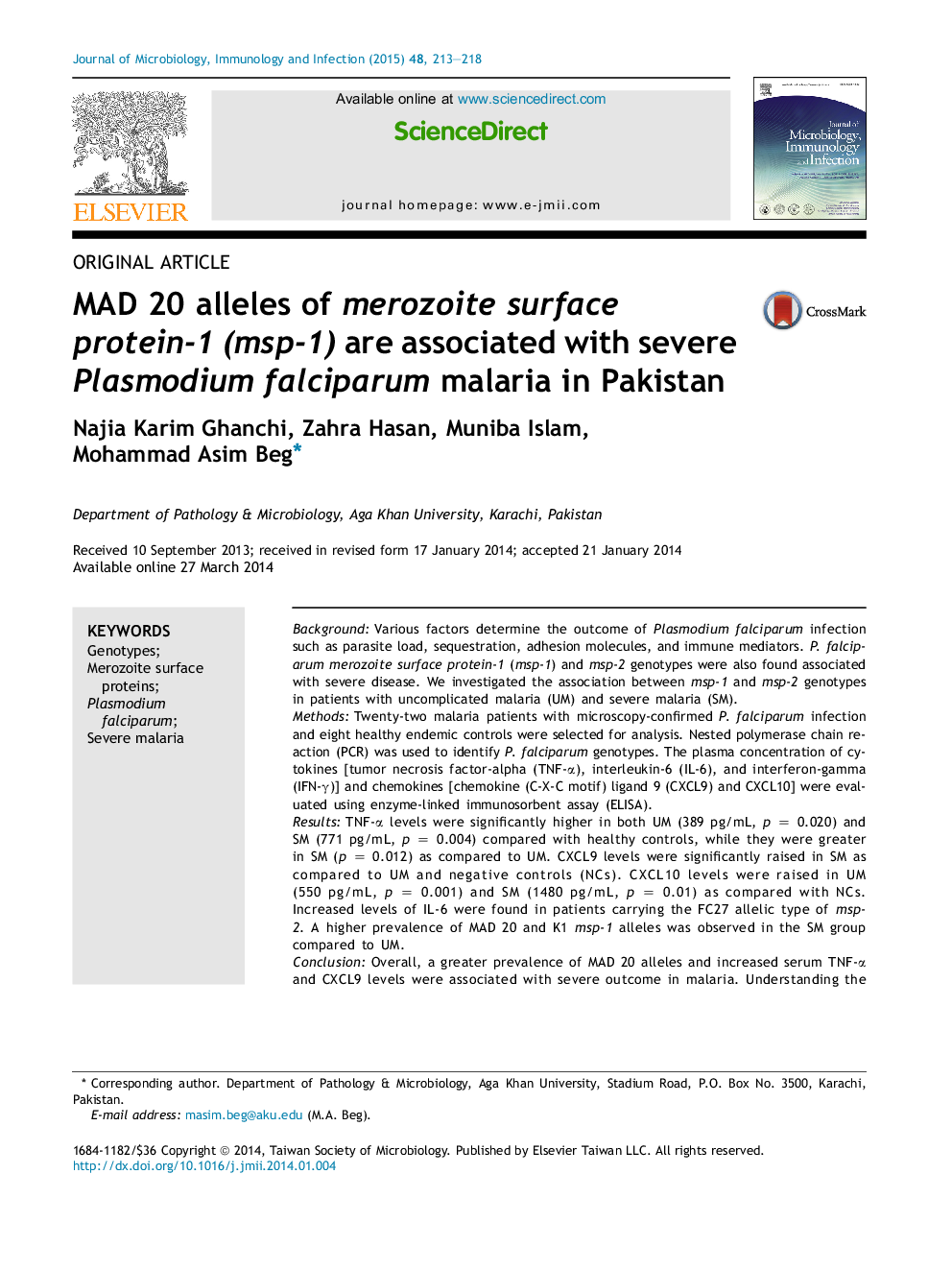| Article ID | Journal | Published Year | Pages | File Type |
|---|---|---|---|---|
| 3377847 | Journal of Microbiology, Immunology and Infection | 2015 | 6 Pages |
BackgroundVarious factors determine the outcome of Plasmodium falciparum infection such as parasite load, sequestration, adhesion molecules, and immune mediators. P. falciparum merozoite surface protein-1 (msp-1) and msp-2 genotypes were also found associated with severe disease. We investigated the association between msp-1 and msp-2 genotypes in patients with uncomplicated malaria (UM) and severe malaria (SM).MethodsTwenty-two malaria patients with microscopy-confirmed P. falciparum infection and eight healthy endemic controls were selected for analysis. Nested polymerase chain reaction (PCR) was used to identify P. falciparum genotypes. The plasma concentration of cytokines [tumor necrosis factor-alpha (TNF-α), interleukin-6 (IL-6), and interferon-gamma (IFN-γ)] and chemokines [chemokine (C-X-C motif) ligand 9 (CXCL9) and CXCL10] were evaluated using enzyme-linked immunosorbent assay (ELISA).ResultsTNF-α levels were significantly higher in both UM (389 pg/mL, p = 0.020) and SM (771 pg/mL, p = 0.004) compared with healthy controls, while they were greater in SM (p = 0.012) as compared to UM. CXCL9 levels were significantly raised in SM as compared to UM and negative controls (NCs). CXCL10 levels were raised in UM (550 pg/mL, p = 0.001) and SM (1480 pg/mL, p = 0.01) as compared with NCs. Increased levels of IL-6 were found in patients carrying the FC27 allelic type of msp-2. A higher prevalence of MAD 20 and K1 msp-1 alleles was observed in the SM group compared to UM.ConclusionOverall, a greater prevalence of MAD 20 alleles and increased serum TNF-α and CXCL9 levels were associated with severe outcome in malaria. Understanding the diversity of malaria genotypes is important for predicting disease-related outcomes of P. falciparum infection in endemic areas.
